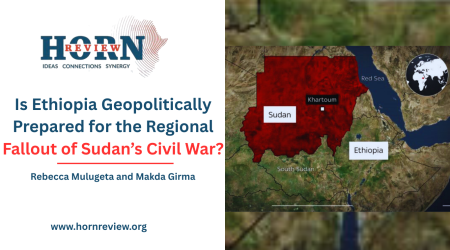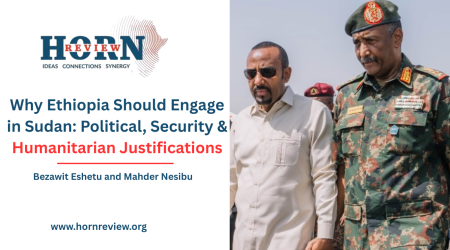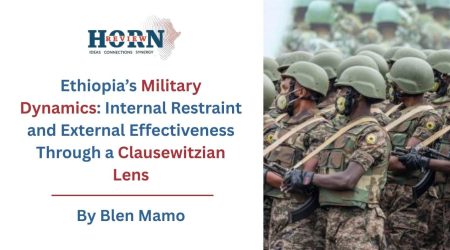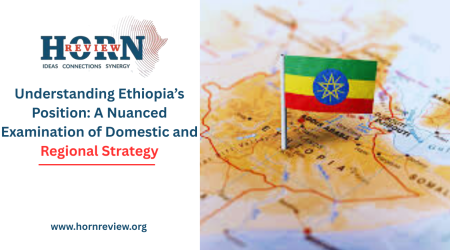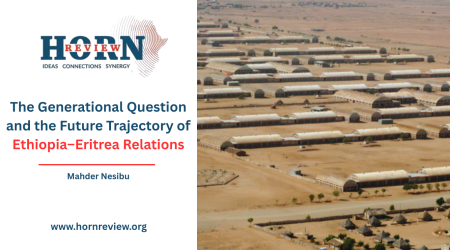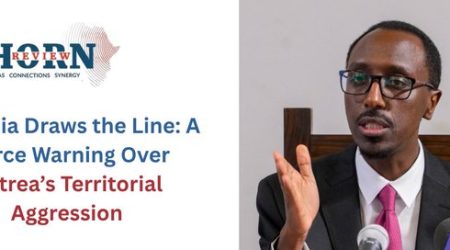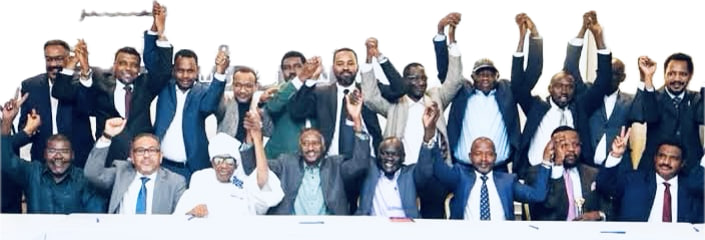
19
Aug
The Rise of RSF’s Parallel Government in Sudan & Its Strategic Implications for Ethiopia
The Rapid Support Forces (RSF) and the Sudan Liberation Movement in the North (SPLM-N) announced a transitional government called Tasis, an Arabic word for “Foundation,” on July 26, 2025. (Sudan Tribune, 2025). Tasis acts as a parallel state to the de facto administration led by the Sudanese Armed Forces (SAF) in Port Sudan, despite the initiative presenting it as unifying for liberated areas. This situation is not similar to the secessionist declarations made during South Sudan’s pre-independence period. It avoids direct language about division; instead, Hemediti, RSF leader, and Abdelaziz al-Hilou, SPLM-N leader, have chosen pragmatic ambiguity, consolidating control over large territories without provoking the immediate backlash that formal secession would bring (Sudan Tribune, 2025).
The silence regarding the division is intentional. Both RSF and SPLM-N are well aware of the consequences they will face if they want to openly declare partition; it could alienate potential global supporters and give SAF a rallying point for national unity. They are establishing the framework of statehood without making a formal decision by embedding their governance in administrative services and education. This approach resembles other African conflict zones, where unofficial entities create shadow institutions before any formal political split. Whether intentionally or not, Tasis is positioning itself as an alternative national authority and not an outright separatist movement (Al Jazeera, 2025)
The shifting landscape of control and power
The geographical distribution further supports this dynamic. The RSF controls most of Darfur, parts of Kordofan, and key routes along Sudan’s western borders; important regions like the Nuba Mountains and the Blue Nile regions are under SPLM-N’s administration, and they oversee security and taxation in these territories together. SAF remains largely in charge of eastern Sudan, including Gedaref, a portion of Kassala and Red Sea State. Neither of the factions controls Khartoum; it remains contested. This power distribution reflects long-standing tensions between Sudan’s central and peripheral regions, with Tasis gaining legitimacy from decades of neglect in the area.
Sudan is getting into a functional partition, with rival actors claiming authority. This trend echoes Charles Tilly’s state theory, which states that war makes states, but in Sudan’s case, war is not making the state; it is establishing competing state-like entities. The RSF’s rural dominance gathers local support at the cost of the administration capacity, while SAF’s urban strongholds give it symbolic legitimacy in limited reach. None of the three scenarios that arise align with the principle of post-colonial sovereignty.
The Foreign Hands shaping Sudan’s future
Dual sovereignty is the most likely to happen. The SAF could consolidate in urban East and North while the RSF establishes itself in rural Darfur, Kordofan, and Blue Nile. If neither prevails, a frozen war emerges, preventing legal recognition but permitting external actors to intervene through diplomacy and aid, potentially hardening into two de facto states. On the other hand, the SAF could collapse, losing Port Sudan or breaking up internally. The RSF might then claim to represent Sudan, leveraging rural control to assert that it is speaking for Sudan. Egypt would fiercely resist, fearing a second civil war, the loss of Sudan as a buffer against the Ethiopian Grand Renaissance Dam, weakened Red Sea influence, and the resurgence of the Muslim Brotherhood, considering the RSF’s Islamist affiliations. The least likely scenario is a federal solution, where the regional pressure from Egypt, Ethiopia and South Sudan forces the creation of a loose federation that grants autonomy to Darfur, Kordofan, and Blue Nile. But the SAF’s rigidity and the RSF’s self-sufficiency make this unlikely. Sudan’s centralized state is unravelling, with urban-rural divides establishing disputed sovereignties or permanent borders.
This situation raises the question: can this parallel administration offer better governance than the troubled SAF leadership in Port Sudan? Although both RSF and SPLM-N have no flawless record, their combined platform currently presents a more unified vision than the fragmented SAF structure, which suffers from internal rivalries and diminished legitimacy. Despite allegations of war crimes, RSF’s local administration initiatives in Darfur have shown an ability to mobilize resources for essential services. Meanwhile, SPLM-N’s quasi-autonomous administration in the Nuba Mountains has sustained relatively functional local institutions over the years.
This fragmentation is rapidly becoming an issue in the global setting. As the RSF and SAF battle for legitimacy, regional and international actors are reshaping their influence. Hemedti has been given a financial lifeline by the UAE’s covert support for RSF-affiliated business networks in gold and logistics, while Egypt’s overt military and intelligence support for SAF solidifies its role as Sudan’s political guarantor. These rival interventions risk locking Sudan’s internal collapse within a larger proxy war. Turkey and Qatar, wary of Egypt’s dominance, have quietly extended diplomatic gestures to RSF-aligned civilian elites, while Israel is contemplating the future through its normalization diplomacy. This geopolitical scramble reduces Sudanese actors to mere instruments of foreign agendas. Non-alignment is dead: each faction’s survival increasingly relies on external support, undermining sovereignty even in secession in this environment. (Reuters, 2025).
Ethiopia’s strategic dilemma and a way ahead
What is happening in Sudan may signal the eclipse of the post-colonial African consensus that equated sovereignty with territorial integrity. Tasis’s quiet state-building without declaration represents a significant shift in control, not recognition; it becomes the metric of legitimacy. If the African Union fails to deter or mediate Sudan’s silent partition, it risks establishing a dangerous precedent: a statehood defined by practical administration and not a formal recognition.
Ethiopia faces opportunities and risks as a result of Sudan’s fragmentation. The geographical proximity prevents neutrality while Sudan’s collapse arms insurgents, disrupts trade and reshapes Nile politics. Historically, the Sudanese government, led by the SAF, fostered skepticism in Ethiopia by supporting anti-Ethiopian insurgents, including Eritrean and Tigrayan groups. The SAF’s weakness benefits Ethiopia because it makes the environment difficult for Sudan to support Egypt’s anti-GERD position, weakening the Sudan-Egypt axis.
There are also consequential risks. The RSF’s expansion into the Blue Nile, bordering Benishangul-Gumuz, presents a risk of spillover because of smuggling networks and tribal ties. The SPLM-N’s push for Nuba-led autonomy agenda could resonate in Ethiopia’s borderlands, igniting secessionist feelings. South Sudan’s ethnic ties to the SPLM-N, through the Nuer and Dinka communities make it a potential mediator while also being a potential source of instability if ethnic tensions spill over.
The Red Sea intensifies the stakes. If the SAF weakens, China’s economic stakes, Russia’s naval ambitions, and Saudi Arabia’s port investments could reshape the region. The competition for Red Sea influence threatens to turn Sudan into a battleground for Gulf dominance, mirroring Yemen’s descent into fragmented proxy conflicts. Egypt’s backing of the SAF, driven by Nile and regional concerns, intensifies the existing threats. Ethiopia, being a landlocked country with its maritime ambitions, cannot afford exclusion in this evolving situation. While a stable Sudan is preferred, a fragmented Sudan with a manageable faction is perceived as better than one controlled by hostile forces.
Ethiopia can no longer maintain a wait-and-see strategy; it could use its positions as a member of the African Union to promote regional mediation, integrating with RSF factions and acting as an impartial mediator to ensure border stability. This outreach must not offend the SPLM-N since the resonance of the Nuba agenda in Benishangul-Gumuz could destabilize Ethiopia’s borderlands. If Ethiopia fails to take control of the new Sudanese order, others will seize control, affecting the border security and the future balance of power along the Nile and Red Sea. Ethiopia must avoid becoming overly associated with either side of the civil war in Sudan but its people.
By Bezawit Eshetu, Researcher, Horn Review
References
Sudan Tribune. (2025, July 26). Sudan’s parallel authority names former official as prime minister. Sudan Tribune. https://sudantribune.com/article303261/
Al Jazeera. (July 28, 2025). Why Sudan’s RSF chose this parallel government ahead of peace talks. Al Jazeera. https://www.aljazeera.com/news/2025/7/28/why-sudans-rsf-chose-this-parallel-government-ahead-of-peace-talks
Reuters. (July 31, 2025). The two rival governments that could split Sudan. Reuters.
https://www.reuters.com/world/africa/two-rival-governments-that-could-split-sudan-2025-07-31/

